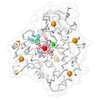Entry Database : PDB / ID : 1qavTitle Unexpected Modes of PDZ Domain Scaffolding Revealed by Structure of NNOS-Syntrophin Complex ALPHA-1 SYNTROPHIN (RESIDUES 77-171) NEURONAL NITRIC OXIDE SYNTHASE (RESIDUES 1-130) Keywords / / / Function / homology Function Domain/homology Component
/ / / / / / / / / / / / / / / / / / / / / / / / / / / / / / / / / / / / / / / / / / / / / / / / / / / / / / / / / / / / / / / / / / / / / / / / / / / / / / / / / / / / / / / / / / / / / / / / / / / / / / / / / / / / / / / / / / / / / / / / / / / / / / / / / / / / / / / / / / / / / / / / / / / / / / / / / / / / / / / Biological species Mus musculus (house mouse)Rattus norvegicus (Norway rat)Method / / Resolution : 1.9 Å Authors Hillier, B.J. / Christopherson, K.S. / Prehoda, K.E. / Bredt, D.S. / Lim, W.A. Journal : Science / Year : 1999Title : Unexpected modes of PDZ domain scaffolding revealed by structure of nNOS-syntrophin complex.Authors : Hillier, B.J. / Christopherson, K.S. / Prehoda, K.E. / Bredt, D.S. / Lim, W.A. History Deposition Mar 30, 1999 Deposition site / Processing site Revision 1.0 May 4, 1999 Provider / Type Revision 1.1 Oct 21, 2007 Group Revision 1.2 Jul 13, 2011 Group Revision 1.3 Feb 14, 2024 Group / Database referencesCategory chem_comp_atom / chem_comp_bond ... chem_comp_atom / chem_comp_bond / database_2 / struct_ref_seq_dif Item / _database_2.pdbx_database_accession / _struct_ref_seq_dif.details
Show all Show less
 Yorodumi
Yorodumi Open data
Open data Basic information
Basic information Components
Components Keywords
Keywords Function and homology information
Function and homology information

 X-RAY DIFFRACTION /
X-RAY DIFFRACTION /  SYNCHROTRON / Resolution: 1.9 Å
SYNCHROTRON / Resolution: 1.9 Å  Authors
Authors Citation
Citation Journal: Science / Year: 1999
Journal: Science / Year: 1999 Structure visualization
Structure visualization Molmil
Molmil Jmol/JSmol
Jmol/JSmol Downloads & links
Downloads & links Download
Download 1qav.cif.gz
1qav.cif.gz PDBx/mmCIF format
PDBx/mmCIF format pdb1qav.ent.gz
pdb1qav.ent.gz PDB format
PDB format 1qav.json.gz
1qav.json.gz PDBx/mmJSON format
PDBx/mmJSON format Other downloads
Other downloads 1qav_validation.pdf.gz
1qav_validation.pdf.gz wwPDB validaton report
wwPDB validaton report 1qav_full_validation.pdf.gz
1qav_full_validation.pdf.gz 1qav_validation.xml.gz
1qav_validation.xml.gz 1qav_validation.cif.gz
1qav_validation.cif.gz https://data.pdbj.org/pub/pdb/validation_reports/qa/1qav
https://data.pdbj.org/pub/pdb/validation_reports/qa/1qav ftp://data.pdbj.org/pub/pdb/validation_reports/qa/1qav
ftp://data.pdbj.org/pub/pdb/validation_reports/qa/1qav Links
Links Assembly
Assembly
 Components
Components



 X-RAY DIFFRACTION / Number of used crystals: 2
X-RAY DIFFRACTION / Number of used crystals: 2  Sample preparation
Sample preparation Processing
Processing Movie
Movie Controller
Controller


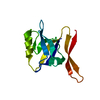
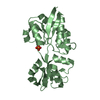



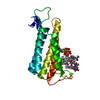
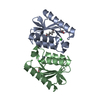
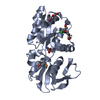

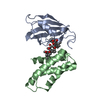
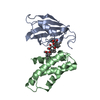
 PDBj
PDBj
